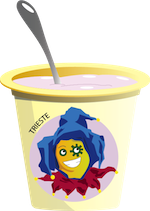Team:Trieste/parts/7
From 2012.igem.org
(Difference between revisions)
Samarisara (Talk | contribs) |
|||
| Line 45: | Line 45: | ||
cellular ligands” K. Ettayebi and M. E. Hardy. | cellular ligands” K. Ettayebi and M. E. Hardy. | ||
Published: 31 January 2008 in Virology Journal 2008, 5:21 | Published: 31 January 2008 in Virology Journal 2008, 5:21 | ||
| - | + | <br/> | |
| - | + | <br/> | |
| - | </ | + | |
<h2>Looking forward</h2> | <h2>Looking forward</h2> | ||
</br> | </br> | ||
Revision as of 19:37, 25 September 2012
BBa_K875007
More
Description
This construct is designed for the expression of secreted, already described engeneered antinorovirus (NoV) monoclonal antibody (mAb 54.6). The antibody is expressed in a small immuno protein (SIP) format containing light (VL) and heavy (VH) variable domains separeted by a flexible peptide linker and constant domain (CH3) of heavy chain of human immunoglobulin A (IgA). It has already been reported that the scFv 54.6 (which makes part of SIP) binds a native recombinant NoV particles (VLPs) and inhibits VLP interaction with cells. Alpha isotype CH3 domain homodimerizes confering bivalent binding properties to the antibody. PelB is a leader sequence often used to produce secreted proteins.The construct consists of T5 Lac Operator (Bba_K875002), ribosomal binding site, PelB-SIP 54.6 antinorovirus, Hystidine tag (6HIS), Terminator (B0015).
The expression of protein PelB-SIP 54.6-HIS is regulated by T5 Lac Operator (Bba_K875002). When the promote T5 Lac O is induced with IPTG (1mM), SIP 54.6. PelB drives the protein into the periplasmic space where is clived off. The resulting protein then can be released into extracellular space released into the extracellular space by passing through porins.
Molecular Weigth 44.06 kDa.
Assembly
Obtained by synthesis.
Results
The cloning success has been verified by Colony PCR. (Fig. 1) The construct has been completely sequenced.The construct was tested in E.coli W3110 strain which was previously trasformed with p-REP 4 coding for the T5 Lac Repressor. The recombinant bacterial colonies were induced at O.D.= 0.4 (2x102 bacterial cells/ml) with IPTG (1mM) at 37°C in shaker. 2ml of bacterial colture was centrifuged and the pellet was resuspended in 200μl of lysis buffer. The samples were then sonicated and boiled for 5 min at 95°C. 10μl of lysates of induced, non-induced and non trasformed bacterial cultures were resolved on SDS-PAGE. The expression of protein SIP 54.6-His was tested by Western blotting with anti-6HIS antibodies (Fig. 2).
Western blot with anti-6HIS antibodies showed the band corresponding to SIP 54.6 at the expected position in the IPTG-iduced sample. In the non-induced sample, a weaker signal is also detected suggesting that the promoter is leaky. Aspecific signals are also visible; some of them are due to proteins partially degraded.
Reference:
1. “Recombinant norovirus-specific scFv inhibit virus-like particle binding to cellular ligands” K. Ettayebi and M. E. Hardy. Published: 31 January 2008 in Virology Journal 2008, 5:21
Looking forward
Link to the Registry







 "
"









